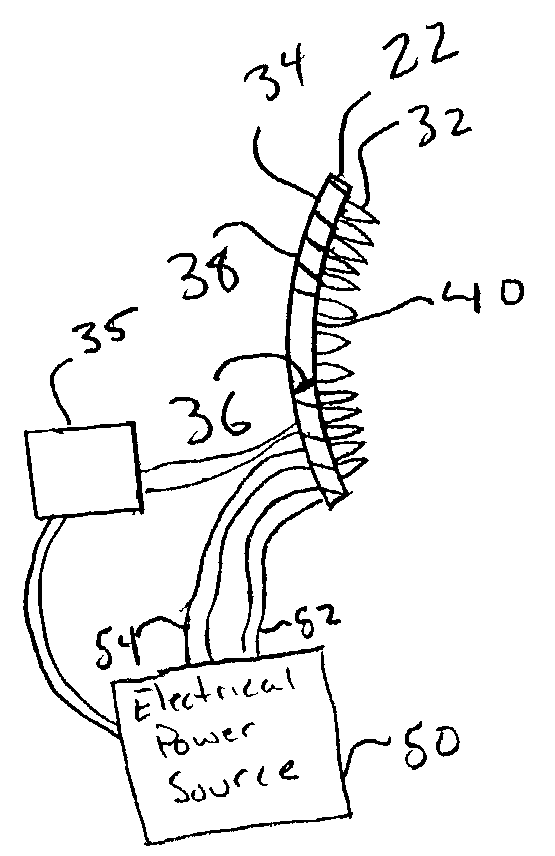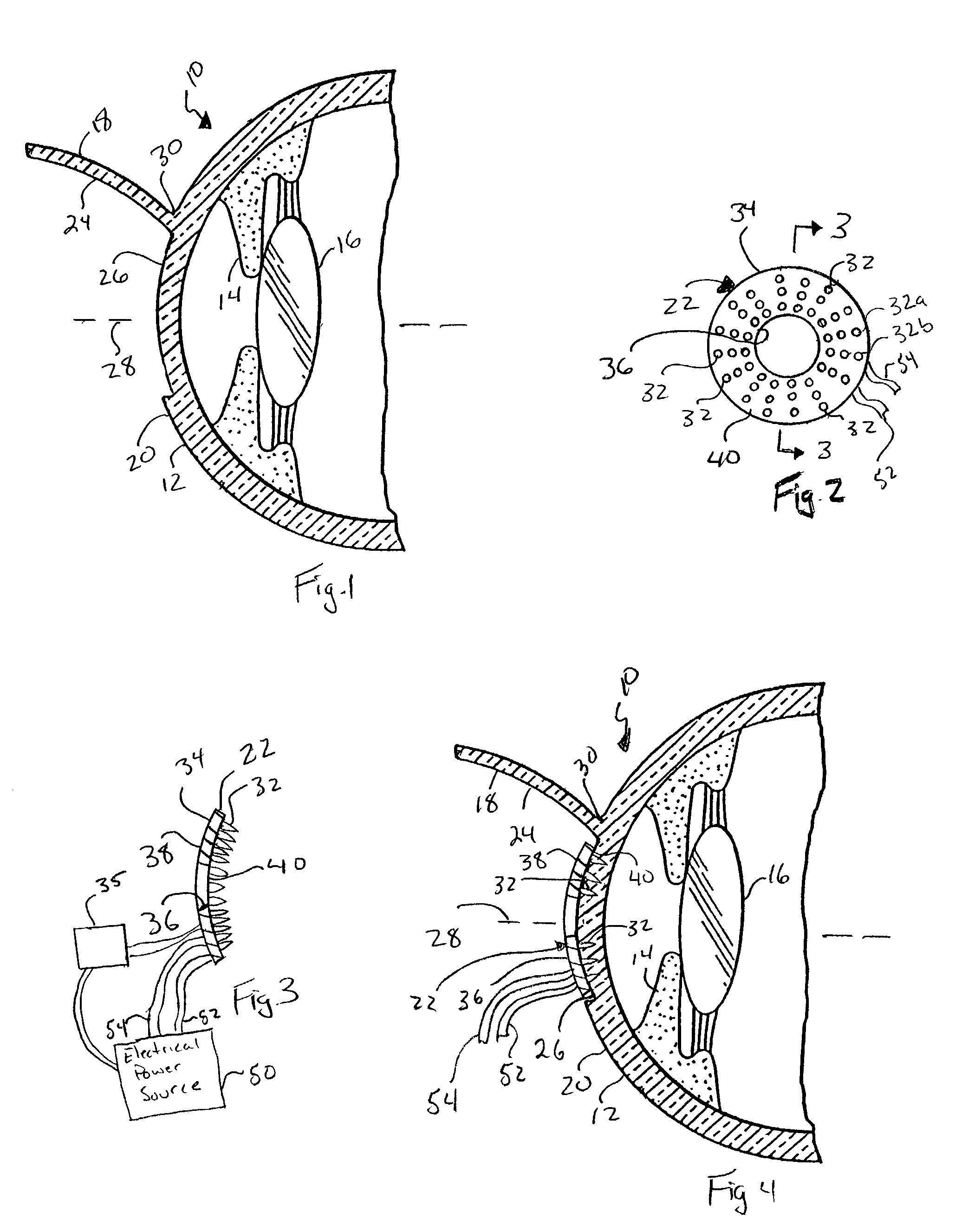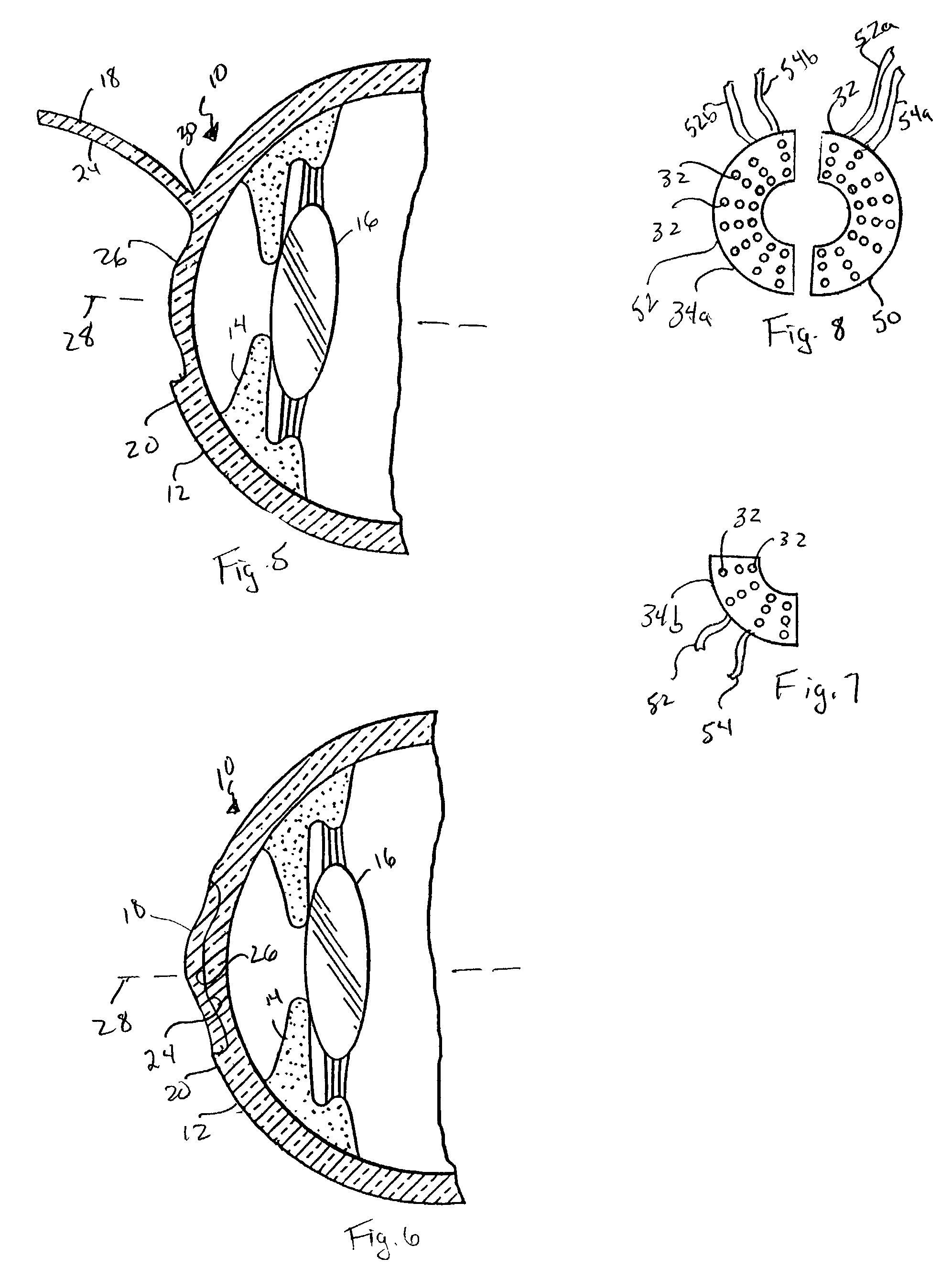Method and apparatus for corneal shrinkage using a plurality of electrodes
a technology of electrodes and cornea, applied in the field of corneal shrinkage, can solve the problems of inability of the lens and cornea to focus the far point correctly, inability of the astigmatic eye to sharply focus images on the retina, and ametropia, so as to avoid or eliminate outward bulging or instability of the cornea and avoid irregular shrinkage of the corneal tissu
- Summary
- Abstract
- Description
- Claims
- Application Information
AI Technical Summary
Benefits of technology
Problems solved by technology
Method used
Image
Examples
Embodiment Construction
[0039]FIG. 1 is a side elevational view in cross section taken through the center of an eye 10, which includes a live cornea 12, a live pupil 14 and a live lens 16. If the cornea 12 and lens 16 do not cooperatively focus light correctly on the retina (not shown) of the eye to thus provide adequate vision, the curvature of the cornea can be modified to correct the refractive power of the cornea and thus correct the manner in which the light is focused with respect to the retina.
[0040]As seen in FIGS. 1–6, the refractive properties of the eye can be modified or altered by forming a flap 18 in the outer surface 20 of the cornea, and heating the cornea using a reshaping device 22. Since the cornea is reshaped via coagulation of the cornea, which causes shrinkage of the corneal tissue, this method is particularly effective for hyperopia and astigmatism.
[0041]To begin, the refractive error in the eye is measured using wavefront technology, as is known to one of ordinary skill in the art. ...
PUM
 Login to View More
Login to View More Abstract
Description
Claims
Application Information
 Login to View More
Login to View More - R&D
- Intellectual Property
- Life Sciences
- Materials
- Tech Scout
- Unparalleled Data Quality
- Higher Quality Content
- 60% Fewer Hallucinations
Browse by: Latest US Patents, China's latest patents, Technical Efficacy Thesaurus, Application Domain, Technology Topic, Popular Technical Reports.
© 2025 PatSnap. All rights reserved.Legal|Privacy policy|Modern Slavery Act Transparency Statement|Sitemap|About US| Contact US: help@patsnap.com



